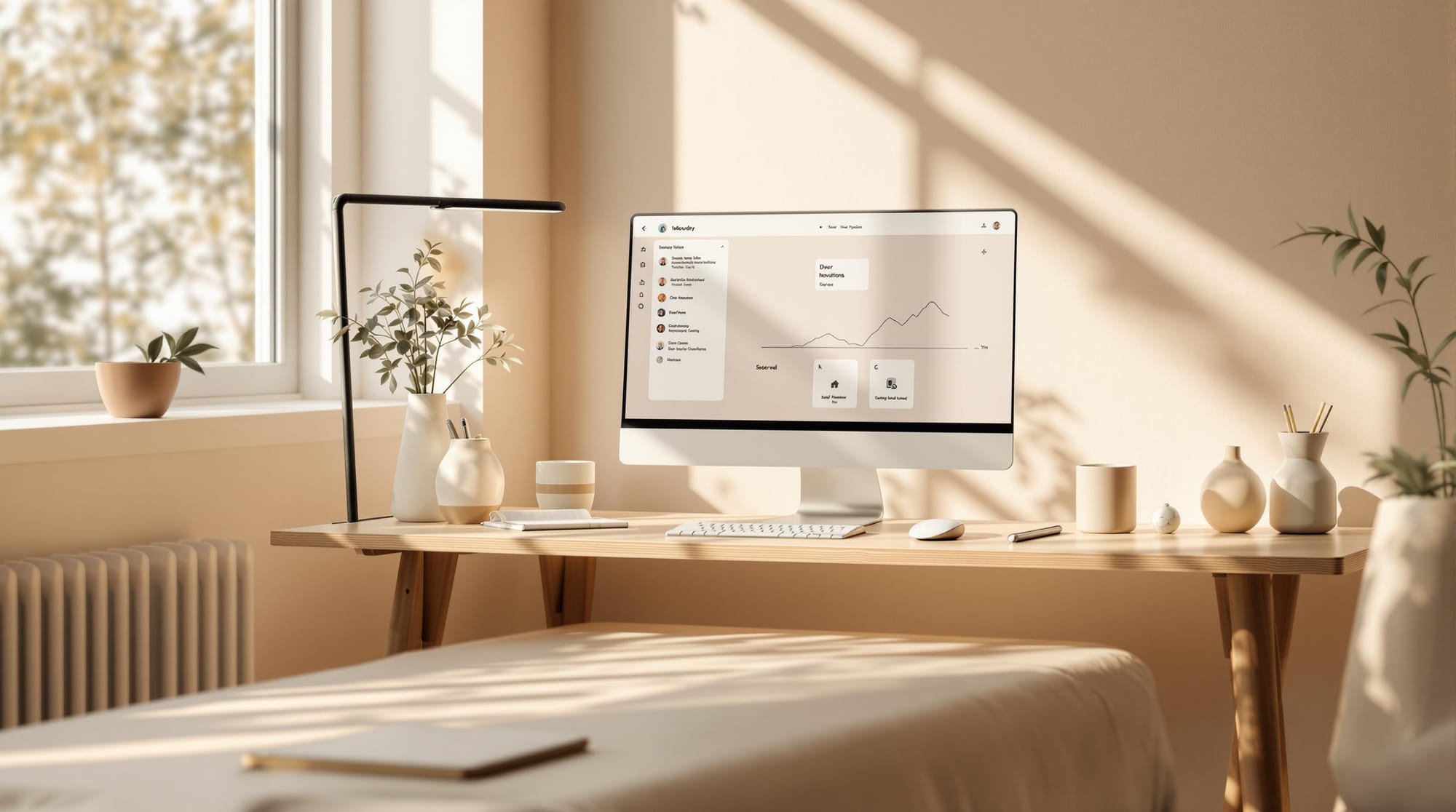Ultimate Guide to Cognitive Load Reduction in UX Design
Learn effective strategies for reducing cognitive load in UX design to enhance user experience and streamline interactions.

Reducing cognitive load in UX design means making it easier for users to process information and complete tasks. When mental effort is too high, users make more mistakes, take longer to finish tasks, or abandon them altogether. Here's how to simplify your designs and improve user experience:
- Simplify Interfaces: Use consistent patterns, clear layouts, and minimal distractions.
- Organize Information: Group related items, use spacing, and create logical structures.
- Improve Navigation: Add clear menus, strong search tools, and visual hierarchies.
- Progressive Disclosure: Show information step-by-step to avoid overwhelming users.
- Optimize Forms: Remove unnecessary fields and enable autofill to save time.
Human Factors Psychology for UX Design: Cognitive Load ...
Types of Cognitive Load
Now that we’ve covered what cognitive load is and why it matters, let’s break it down into its two main types: task complexity load and design-related load.
Task Complexity Load
This type of load comes from the mental effort required by the task itself. To ease this, designers can focus on making processes simpler - like creating intuitive navigation paths, organizing layouts clearly, and shortening or simplifying forms.
Design-Related Load
This load is caused by confusing design choices, such as cluttered layouts or inconsistent patterns. To address this, designers can ensure clear communication, use scalable structures, and apply animations thoughtfully to guide users without overwhelming them.
Up next, we’ll dive into practical ways to reduce both types of cognitive load.
Key Methods to Reduce Mental Load
Reducing mental load involves addressing both task complexity and design challenges. Here are three effective approaches to help users navigate with less effort.
Simplify the Interface
A straightforward interface eliminates unnecessary elements and uses consistent, predictable patterns to guide users. Focus on what matters most to support user goals and cut distractions:
- Use consistent interactive elements
- Keep plenty of white space
- Create a clear visual hierarchy
- Limit the color palette
- Stick to familiar interaction patterns
In addition to visual clarity, logically organizing content can further ease the user's mental effort.
Organize Information Effectively
Well-structured content helps users quickly understand relationships and reduces visual noise. Here’s how:
- Chunking: Break content into smaller, manageable sections with related items grouped together.
- Visual Grouping: Use spacing, borders, or subtle background accents to indicate connections between elements.
Make Information Easy to Locate
Strategically placing navigation and content can reduce the time users spend searching. Consider these methods:
- Clear Navigation: Implement familiar menu layouts and keep navigation elements consistently placed.
- Visual Hierarchy: Use size, weight, and contrast to naturally guide users' attention.
- Search Functionality: Provide a strong search tool with filters and suggestions to help users find what they need quickly.
To ensure your design choices work, test them with real users. Observing how they interact with your design can reveal issues and confirm that these methods truly reduce cognitive load.
Information Hierarchy Methods
Organizing content effectively can make it easier for users to navigate and understand information. Here are two practical methods to structure content in a way that simplifies the user experience.
Progressive Information Display
Use tools like accordions, tooltips, or step-by-step flows to reveal content only when needed. This keeps the interface clean and reduces cognitive load, guiding users through each stage without overwhelming them.
User-Based Content Order
Base your content structure on user research. Conduct surveys, identify high-priority tasks, and align the layout with how users typically work. This approach ensures the most important information is front and center, tailored to actual user needs.
Design Techniques for Lower Cognitive Load
These design methods aim to make tasks easier by reducing the mental effort users need to complete them.
Simpler User Paths
Cut down on unnecessary steps and clicks to make navigation more straightforward. Use smart defaults by preselecting common choices and pre-filling fields. This approach shortens workflows, reducing the complexity of tasks and helping users complete them faster.
Visual Hierarchy & Typography
Good visual organization helps users process content more easily. Here's how:
- Typography hierarchy: Use headings, subheadings, and varying text styles to highlight key information.
Keeping a consistent layout across the interface ensures users can rely on familiar patterns, allowing them to focus on their tasks instead of figuring out new designs.
Better Form Design
Forms can be a major source of frustration, but optimizing them can make a big difference:
- Remove unnecessary fields: Only ask for information that’s absolutely required.
- Enable browser autofill: This speeds up the process and reduces the effort needed to complete forms.
These small adjustments make forms easier to use, improving the overall experience and reducing mental strain.
Wrapping Up
In this guide, we broke down ways to make tasks easier for users, focusing on clear interface design, organized structures, and simple navigation. By reducing mental effort, you can improve usability and keep users coming back.
Use techniques like progressive disclosure and consistent visual hierarchies to lead users through your design without overwhelming them. Stick to clean layouts, logical content organization, and straightforward navigation to make interactions seamless.
Remember, it’s not just about looks - reducing cognitive effort directly impacts user satisfaction and the success of your product. When users can navigate effortlessly and meet their goals quickly, they’re more likely to return. A smartly designed interface benefits everyone, no matter their tech skills.
Take these insights into your next project to craft experiences that are both intuitive and enjoyable.
